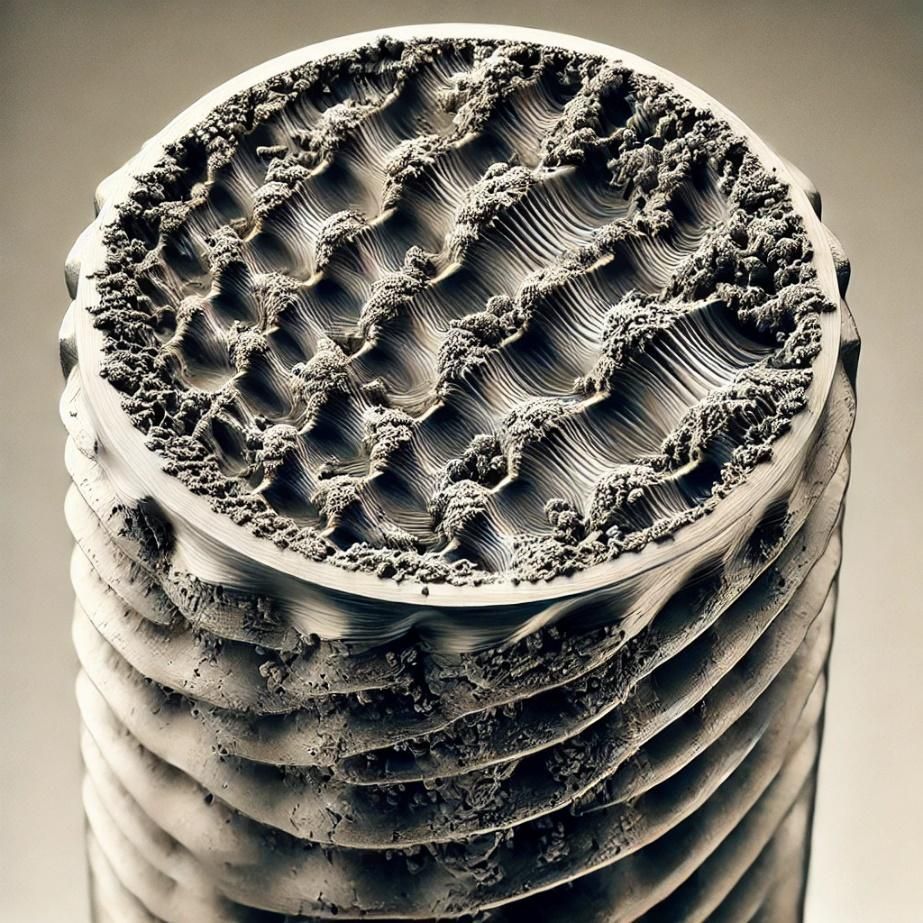THE ISO METRIC SYSTEM
Production Materials
The International Metric System (ISO) is a set of globally used standards that ensures production materials meet specific requirements for quality, safety, and compatibility. This system covers a wide range of materials, from metals to polymers, providing guidelines on how they should be produced, tested, and used. In this document, we will explore the main production materials that comply with ISO standards, analyzing their properties, applications, and manufacturing processes.
Metallic Materials
Properties and Classification
Metallic materials are among the most widely used in industrial production. ISO standards classify metals based on their mechanical and chemical properties. The following table summarizes the main metals and their properties:
| Material | Tensile Strength (MPa) | Hardness (HB) | Melting Point (°C) |
|---|---|---|---|
| Stainless Steel | 520 - 750 | 150 - 250 | 1400 - 1450 |
| Aluminum | 70 - 700 | 20 - 150 | 660 |
| Copper | 240 - 1200 | 35 - 110 | 1083 |
| Titanium | 240 - 1200 | 120 - 330 | 1668 |
Manufacturing Processes
The main manufacturing processes for metallic materials include casting, forging, rolling, and welding. These processes must be carried out in accordance with ISO standards to ensure product quality and safety.
Example of Casting Process:
Raw material preparation: Selection and cleaning of metals.
Melting: Heating the metals to their melting point.
Pouring: Pouring the molten metal into molds.
Cooling and solidification: Controlled cooling to achieve the desired shape.
Polymeric Materials
Properties and Classification
Polymers are synthetic materials widely used in various sectors, from automotive to packaging. ISO standards provide detailed specifications for the mechanical and thermal properties of polymers. The following table summarizes some of the main properties of various polymers:
| Material | Density (g/cm³) | Elastic Modulus (MPa) | Temperatura di fusione (°C) |
|---|---|---|---|
| Polyethylene (PE) | 0,91 - 0,96 | 200 - 300 | 120 - 130 |
| Polypropylene (PP) | 0,90 - 0,92 | 1300 - 1800 | 160 - 170 |
| Polyvinyl Chloride (PVC) | 1,30 - 1,45 | 2500 - 3500 | 160 - 220 |
| Polyethylene Terephthalate (PET) | 1,38 | 2800 - 3100 | 250 - 260 |
Manufacturing Processes
The main manufacturing processes for polymeric materials include injection molding, extrusion, and blow molding. These processes must strictly adhere to ISO standards to ensure that the final products are safe and reliable.
Example of Injection Molding Process:
Material preparation: Heating the polymer until it becomes viscous.
Injection: The heated polymer is injected into the mold.
Cooling: The polymer solidifies inside the mold.
Ejection: The finished product is removed from the mold.
References
ISO 9001:2015 – Quality Management Systems
ISO 14001:2015 – Environmental Management Systems
ISO 45001:2018 – Occupational Health and Safety Management Systems
Conclusion
Adopting ISO standards in the production of materials not only ensures product quality and safety but also increases a company’s competitiveness in the global market. ISO-certified materials are recognized for their reliability and high performance, making them a preferred choice for customers and business partners. Investing in ISO-compliant production materials allows companies to reduce long-term manufacturing costs.













